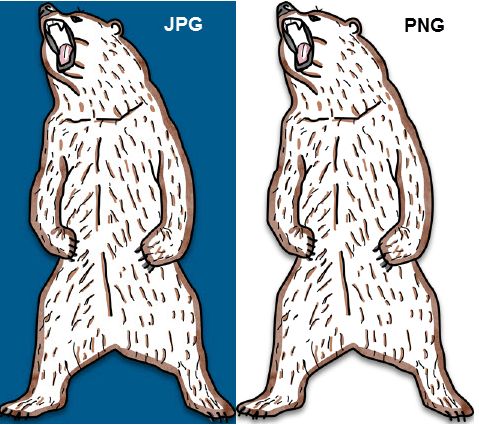JPG is the abbreviation of JPEG; reduced to three letters, as is common for filename extensions. JPEG (Joint Photographic Experts Group) is an association of companies and research institutes that set this standard for storing digital images in 1992.
Related Articles for the subject:
- What are GIFs and why are they important?
- What is the difference between JPEG and PNG
- How to optimize images in scale with Python
File size of TIF, BMP, PNG, and JPG format
The decisive advantage of the JPG format is its small space requirement due to compression of the image data, i.e., mathematical methods reduce the amount of data when creating an image file and have to be applied the other way around when opening a file to restore the picture.
Without compression, each point of a color image would require three bytes for the three color components red, green, and blue, and an image of e.g., 10 megapixels occupy around 30 megabytes, as you get it in the so-called “bitmap” file format (.bmp). JPG files manage with a fraction of the amount of data.
The strength of the JPG format is that the logic for compression is adapted to the peculiarities of digital photos, i.e. it is suitable for
Images with a color gamut of 16.7 million colors (each of 256 levels for red, green, and blue)
Images with rather continuous color and brightness transitions between neighboring pixels, as is typical for photos.
The compression works differently depending on the subject; detailed images are more difficult to compress than those with large, weakly contoured areas.
However, the compression entails visible or invisible quality losses. This means that after opening (= decompressing) a JPG file, you get an image that is not exactly the same as the original image.
What is the Difference Between JPG and JPEG
JPEG stands for “Joint Photographic Experts Group” and, like PNG, is a standard that defines how an image is compressed. However, there are several subspecies of the format, such as JPG, JPEG, JPE, and JFIF. These define further values that are not determined by the standard, such as the respective color space.
In earlier versions of Windows, JPG was mainly used as an abbreviation for JPEG. Windows often had problems opening images with the JPEG extension because the system was originally only able to process three-letter file extensions.
For the same reason, the identical formats TIF and TIFF, MPG and MPEG, as well as HTM and HTML still exist today
Conclusion: JPG is both the short file extension of JPEG and thus a leftover from the old DOS times, as well as a sub-format of JPEG.
Which one is better
What is the Difference Between PNG and JPEG
The file compression for a PNG file is lossless. All information is retained even if the file is compressed. Lossless compression is necessary if you have not yet finished editing the images. The PNG format is often used when the file size doesn’t matter and the image is relatively complex. A PNG file can store more information than a JPG file. PNG is also ideal for graphics like the icon below.

The JPG file format has established itself worldwide, every digital camera can produce images in JPG format and it is also the standard for the exchange of photos on the Internet.
You can read What is the PNG for more information.
Images are one of the most important parts of websites. This also makes them significant for the Holistic SEOs. We will continue to examine every asset kind of the web page such as text, images, HTML, CSS, and JavaScript.
- Sliding Window - August 12, 2024
- B2P Marketing: How it Works, Benefits, and Strategies - April 26, 2024
- SEO for Casino Websites: A SEO Case Study for the Bet and Gamble Industry - February 5, 2024

